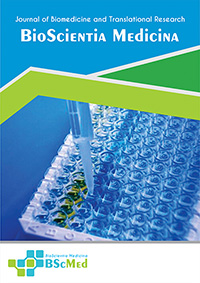Main Article Content
Abstract
Background: The management of major depressive disorder (MDD) is frequently complicated by the presence of medical comorbidities and profound psychosocial stressors. This complexity creates a significant risk for "diagnostic overshadowing," where one clinical issue may mask others, leading to incomplete treatment. This case report illustrates a systematic diagnostic and therapeutic pathway for a patient whose severe depression represents a confluence of biological, psychological, and social determinants.
Case presentation: We present the case of a 50-year-old female with Severe Major Depressive Disorder, Recurrent Episode (F32.2), whose functional impairment was profound (GAF=40). A systematic diagnostic inquiry revealed a nexus of pathology: previously misidentified hypothyroidism (TSH > 100 µIU/mL), comorbid metabolic syndrome (BMI 31.2 kg/m², HbA1c 7.8%); a significant history of developmental trauma (Adverse Childhood Experiences Score ≥ 4); and acute, severe marital distress involving recurrent spousal infidelity. Informed consent was obtained after assessing her capacity, with family collaboration.
Conclusion: The patient was managed using an integrative bio-psycho-social-spiritual framework. This multidimensional approach involved concurrent medical stabilization, psychopharmacological treatment (Sertraline), and a phase-oriented, trauma-informed psychotherapy. The integration of culturally congruent mind-body practices was essential for building the therapeutic alliance. This holistic strategy resulted in significant, quantifiable improvement in depressive symptoms (BDI-II score decreased from 32 to 18) and functional outcomes. This case underscores the necessity of a systematic, multi-domain assessment to avert clinical error and demonstrates a replicable methodology for treating complex presentations of severe depression.
Keywords
Article Details
As our aim is to disseminate original research article, hence the publishing right is a necessary one. The publishing right is needed in order to reach the agreement between the author and publisher. As the journal is fully open access, the authors will sign an exclusive license agreement.
The authors have the right to:
- Share their article in the same ways permitted to third parties under the relevant user license.
- Retain copyright, patent, trademark and other intellectual property rights including research data.
- Proper attribution and credit for the published work.
For the open access article, the publisher is granted to the following right.
- The non-exclusive right to publish the article and grant right to others.
- For the published article, the publisher applied for the Creative Commons Attribution-NonCommercial-ShareAlike 4.0 International License.





